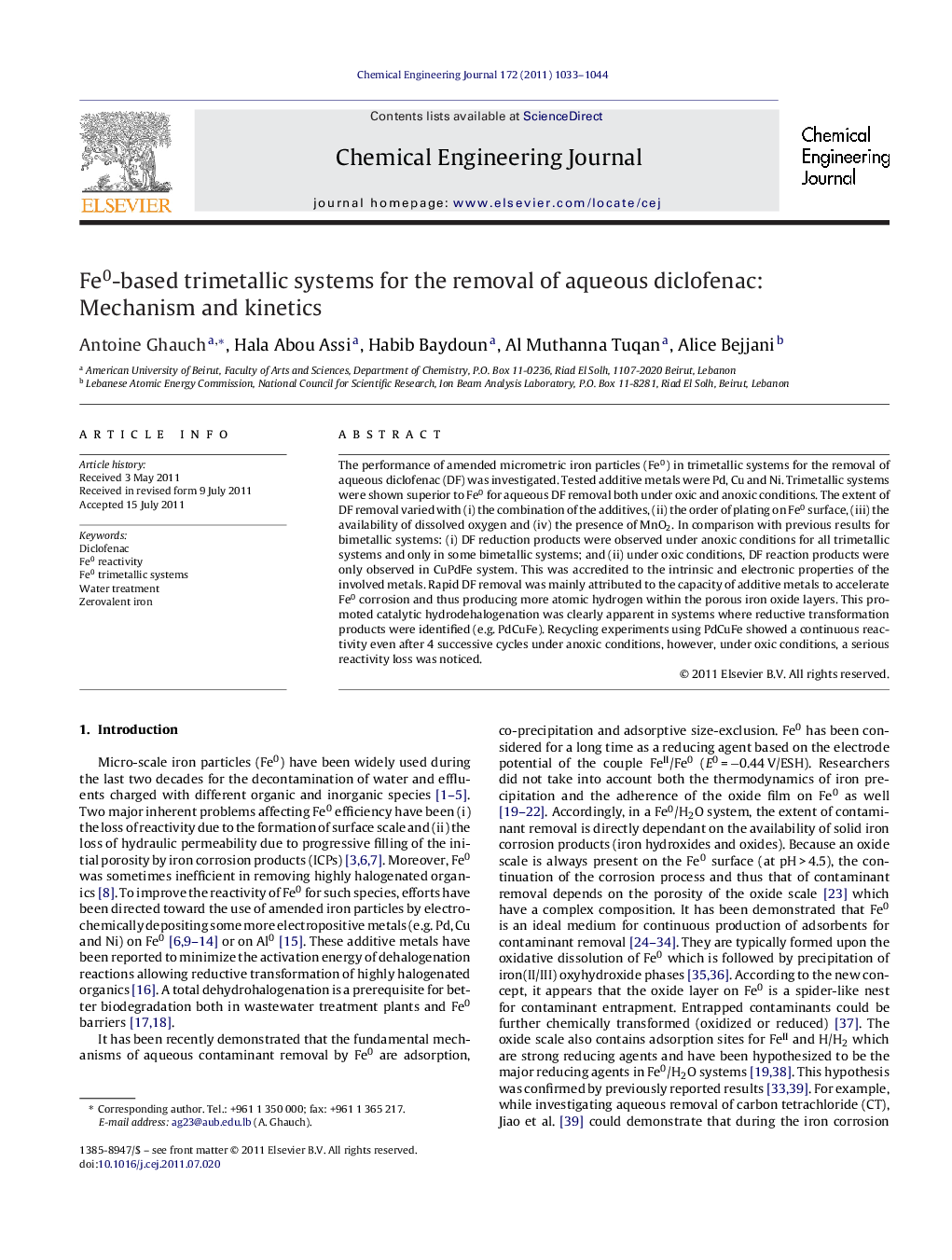| Article ID | Journal | Published Year | Pages | File Type |
|---|---|---|---|---|
| 150809 | Chemical Engineering Journal | 2011 | 12 Pages |
The performance of amended micrometric iron particles (Fe0) in trimetallic systems for the removal of aqueous diclofenac (DF) was investigated. Tested additive metals were Pd, Cu and Ni. Trimetallic systems were shown superior to Fe0 for aqueous DF removal both under oxic and anoxic conditions. The extent of DF removal varied with (i) the combination of the additives, (ii) the order of plating on Fe0 surface, (iii) the availability of dissolved oxygen and (iv) the presence of MnO2. In comparison with previous results for bimetallic systems: (i) DF reduction products were observed under anoxic conditions for all trimetallic systems and only in some bimetallic systems; and (ii) under oxic conditions, DF reaction products were only observed in CuPdFe system. This was accredited to the intrinsic and electronic properties of the involved metals. Rapid DF removal was mainly attributed to the capacity of additive metals to accelerate Fe0 corrosion and thus producing more atomic hydrogen within the porous iron oxide layers. This promoted catalytic hydrodehalogenation was clearly apparent in systems where reductive transformation products were identified (e.g. PdCuFe). Recycling experiments using PdCuFe showed a continuous reactivity even after 4 successive cycles under anoxic conditions, however, under oxic conditions, a serious reactivity loss was noticed.
► Trimetallic Fe0-based systems are extremely reactive toward DF.► Dissolved oxygen decreases DF hydrodehalogenation rate. ► Fe0 corrosion is a key factor for removing DF. ► Adsorption and co-precipitation are important aspects of DF removal mechanism.
